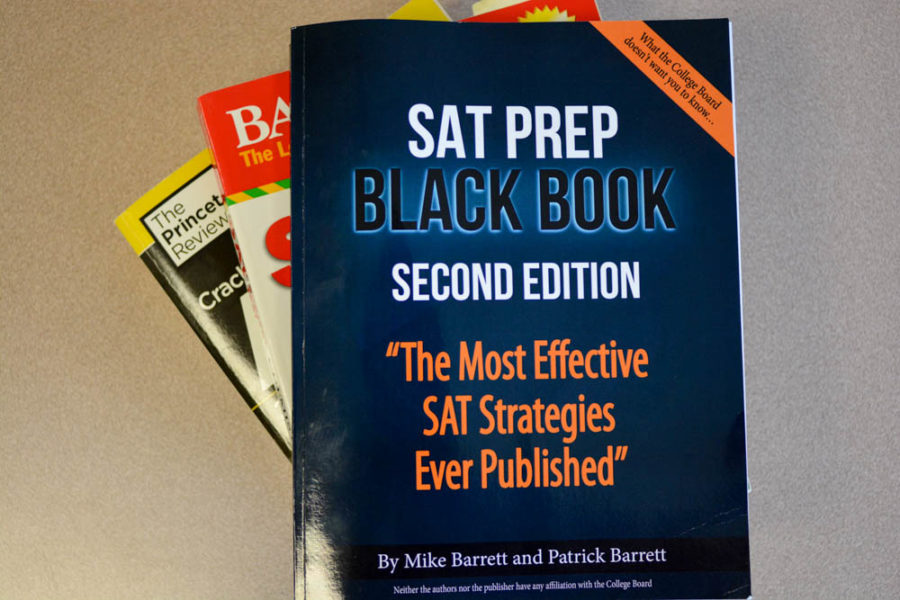Standardized Tests Hurt Low Income Applicants
SAT prep books claim to improve test scores, but the reality of improvement of scores relies on the money people invest in SAT classes and tutors. These are just a few of the many books that students use to prepare for the SAT and other standardized tests.
October 6, 2019
The College Board created controversy in May when it announced that it would be using a new measurement known as the “adversity score” to supplement students’ SAT scores. The adversity score is on a scale of 1-100, calculated based on income levels, property values, crime rates in a student’s neighborhood and the level of education provided at that student’s high school.
On August 27th, however, the College Board announced that it would be dropping its plan to include the adversity score with the SAT. This came after a swarm of criticism from teachers and parents who believed that it was unfair for a number to determine the academic challenges high school students face.
It is obvious that the College Board’s decision to drop the adversity score was made because it was bad for business. This seems to be an overarching theme in college admissions, where schools are making the decisions that are best for profit, not the students’ education.
In recent years colleges and universities have been advertising admitting greater numbers of lower income students and filling their incoming classes with greater degrees of racial diversity. Yet despite these claims, colleges are still businesses, and many of these claims of socioeconomic equality are negated by which students colleges actually choose to admit each year.
In 2017, It was determined that the Ivy League, Stanford, Duke, The University Of Chicago, and M.I.T. admitted two thirds of their students from the top 20% income level in the United States.
Despite what post-secondary education institutions say, admission to elite colleges and universities favors the wealthy as much as it ever has. A major factor contributing to this trend of inequity is the annual “America’s Best Colleges” list that the U.S. News and World Report creates as a guide for college applicants. Along with teacher’s salaries, student to staff ratios, and graduation rates, one of the major factors in calculating a school’s US News and World Report ranking is average SAT/ACT score from the freshman class admitted the previous year.
Standardized tests have proven to be a measure of wealth rather than intelligence. On the SAT’s old 2400 point scale, students from families that made over $200,000 scored an average of 1722, while students closer to the national median income of $40,000-$60,000 only scored 1463.
What’s even more troubling is that many lower income students who apply to universities often have higher GPAs than some of the wealthier students who get accepted. The few lower income students who are admitted often have more academic success in college, proving how the SAT and the ACT are not an effective indicator of how well someone will succeed in their education after high school.
It goes without saying that many colleges would like to admit these more deserving students from lower income families, but they choose to make the decision that’s best for business.
Accepting a wealthy student with a higher test score, but who might not have a higher GPA solidifies the school’s ranking, ensuring more applications next year and more revenue for the college itself.
Universities cannot increase socioeconomic diversity if they can’t pay for it, and accepting a promising student with a lower SAT score who needs financial aid only takes money from a college.
The system that colleges use to decide which students to accept and which to turn down is undeniably rigged in favor of applicants from an affluent background.
In order to create a more level playing field across economic classes universities must begin to abandon the emphasis on standardized test scores. Admitting more applicants from underprivileged neighborhoods will allow us to strengthen our country economically and socially. the path to this starts by understanding that obsessing over test scores will not improve the level of education at the post-secondary level.



David Lee • Oct 7, 2019 at 8:52 PM
Valid Points. Good work by Mr. Katz